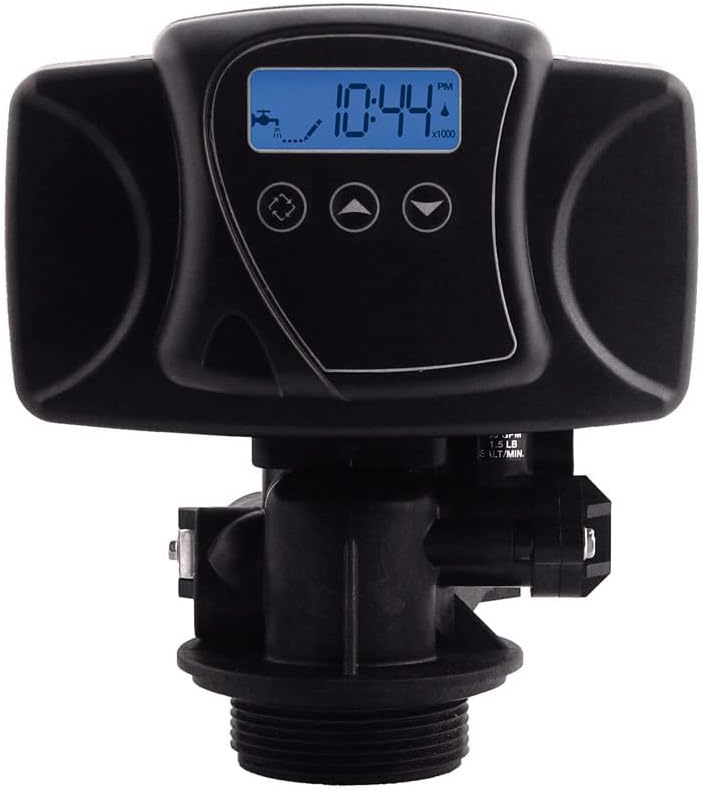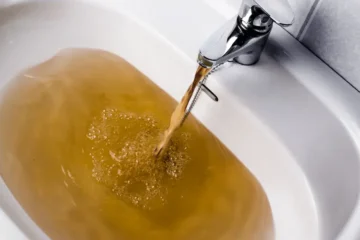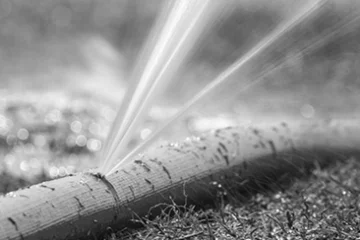Do you want to remove iron from well water at a lower cost? Then you need to read this article. Iron is the 2nd most abundant mineral in Earth’s crust so it can easily get into well water so we need to remove it.
Let’s explore the 8 cheapest ways to remove iron from well water.
8 Cheapest Ways to Remove Iron from Well Water
Here are the 8 cheapest ways to remove iron from well water.
- Oxidizing Filters
- Aeration Systems
- Sediment Filters
- Water Softeners
- Reverse Osmosis
- Activated Carbon
- Chlorination
- Chemical Oxidation
1. Oxidizing Filters
Oxidation transforms Soluble iron into solid particles, we can easily filter these insoluble particles. These filters are designed to remove iron and manganese from water by promoting the oxidation of these minerals.

Types of Media
1. Manganese Greensand
This natural zeolite coated with manganese dioxide is effective for iron and manganese removal through oxidation and filtration.
2. Birm
Composed of glauconite, Birm also facilitates oxidation and subsequent filtration of iron and manganese.
Effectiveness
Well-suited for low to moderate levels of iron and manganese.
Effectiveness may vary based on water pH, temperature, and other water chemistry factors.
Price
Its price can vary from 100 Dollars to 1000 Dollars
2. Aeration Systems
Aeration involves exposing water to air, promoting the exchange of gases, and facilitating the removal of dissolved minerals and gases.
In the context of iron removal, aeration promotes the oxidation of soluble ferrous iron (Fe^2+) to insoluble ferric iron (Fe^3+), which can then be filtered out.
Types of Aeration
1. Bubble Diffusers
Air is pumped into the water through diffusers, creating bubbles that enhance the contact between water and air.
Spray Aerators
Water is sprayed into the air, allowing for oxygen exchange and the release of volatile gases.
2. Effectiveness
Aeration is effective for removing low to moderate levels of dissolved iron, manganese, and hydrogen sulfide.
The efficiency can be influenced by factors such as water temperature, pH, and the concentration of impurities.
Price
Its price can vary from 2.00 Dollars to 200 Dollars
3. Sediment Filters
Sediment filters primarily target suspended particles, including sand, silt, rust, and other debris, preventing them from entering the plumbing system.
Types
1. String-Wound Filters
These are made of polypropylene which is made of tightly wound fibers. It can trap particles as water passes through it.
2. Pleated Filters
It provides a larger surface area for filtration and is effective at capturing smaller particles.
3. Screen Filters
Use a mesh or screen to physically block particles from passing through.
Effectiveness
Sediment filters are highly effective at removing visible particles, improving water clarity, and preventing damage to appliances and plumbing fixtures.
Price
Its price can vary from 50 Dollars to 200 Dollars
4. Water Softeners
Water softeners are devices designed to remove hardness minerals, primarily calcium and magnesium, from well water.
Types
1. Salt-Based Water Softeners
The most common type, using salt to regenerate the resin beads.
2. Salt-Free Water Softeners
Utilize alternative technologies like template-assisted crystallization or citric acid to prevent scale formation without adding sodium to the water.
Effectiveness
Highly effective at removing hardness minerals, preventing scale buildup in pipes, appliances, and fixtures. It also removes calcium and magnesium.
Price
Its cost can be 200 Dollars to 1000 Dollars
5. Reverse Osmosis
Reverse Osmosis is a water purification process that uses a semi-permeable membrane to remove contaminants from well water.
Components of RO System
1. Pre-filters
Trap larger particles and sediment to protect the RO membrane.
2. RO Membrane
The semi-permeable membrane selectively allows water molecules to pass through while blocking contaminants.
3. Post-filters
Further polish the water, improving taste and removing any remaining impurities.
4. Storage Tank
It stores purified water.
Effectiveness
RO systems are water-efficient, producing purified water while minimizing waste.
Some systems may include permeate pumps to enhance efficiency.
Price
Its price can vary from 300 Dollars to 500 Dollars
6. Activated Carbon
Activated carbon, often referred to as activated charcoal, is a versatile and widely used material in water treatment processes. Here are details about activated carbon:
Types of Activated Carbon
1. Powdered Activated Carbon (PAC)
Fine particles are suitable for use in water treatment processes like flocculation and sedimentation.
2. Granular Activated Carbon (GAC)
Larger granules are commonly used in filtration systems for point-of-use or whole-house applications.
Effectiveness
Activated carbon is highly effective in addressing a broad spectrum of water quality concerns, particularly in adsorbing organic compounds, improving taste and odor, and enhancing the overall aesthetics of treated water.
Price
Its price can vary from 2.00 Dollars to 50 Dollars
7. Chlorination
Chlorination is a widely used water treatment method that involves the addition of chlorine or chlorine-containing compounds to water for disinfection purposes. Here are details about chlorination:
Types of Chlorination
1. Pre-Chlorination
Adding chlorine to raw water before other treatment processes.
2. Primary Chlorination
Applying chlorine after initial treatment to ensure disinfection.
3. Post-Chlorination
Adding chlorine to water before distribution to maintain residual disinfection.
Effectiveness
Chlorine is effective in destroying a wide range of waterborne pathogens, making it a reliable method for safeguarding public health.
Price
Chlorination costs 0.75 Dollars per cubic meter.
8. Chemical Oxidation
Chemical oxidation is a water treatment process that involves the use of oxidizing agents to react with and eliminate contaminants in water. Here are details about chemical oxidation:
Types of Chemical Oxidation
1. Chlorination
Involves the addition of chlorine or chlorine-containing compounds for disinfection and oxidation of various contaminants.
2. Ozonation
Utilizes ozone, a powerful oxidant, for the breakdown of organic and inorganic substances.
3. Effectiveness
Chemical oxidation, especially with chlorine or ozone, is effective against a wide range of microorganisms, providing both disinfection and oxidation benefits.
Price
It’s the whole system can cost 2000+ Dollars
Why Do We Need To Remove Iron From Well Water?
A small amount of iron in well water is not dangerous as our bodies utilize it to transport oxygen in the blood but it becomes dangerous if the quantity of iron is more than 10 ppm.
- Consuming too much iron over an extended period can lead to iron overload, a condition known as hemochromatosis. This can result in the accumulation of excess iron in organs, potentially causing damage.
- Iron overload can contribute to organ damage, particularly affecting the liver, heart, and pancreas. This can lead to conditions such as liver cirrhosis, heart problems, and diabetes.
- Excessive iron can contribute to increased oxidative stress in the body. This oxidative stress may damage cells and tissues and is associated with various chronic diseases.
- Iron accumulation in the brain is associated with certain neurodegenerative diseases. While the exact mechanisms are not fully understood, excess iron may play a role in these conditions.
- Individuals with certain medical conditions, such as hereditary hemochromatosis or chronic liver disease, may be more susceptible to the adverse effects of excess iron.
Conclusion
Cost-effective methods to remove iron from well water include oxidizing filters, aeration systems, sediment filters, water softeners, reverse osmosis, activated carbon, chlorination, and chemical oxidation. Selection depends on water characteristics and desired iron removal levels. Factors like pH, temperature, and water chemistry influence effectiveness.
Health risks associated with high iron levels underscore the need for reliable removal solutions. Regular testing and professional consultation are crucial for identifying the most suitable and economical method to address iron contamination in well water.
FAQs
How do you remove iron from well water naturally?
1. Aeration: Allow well water to be exposed to air, promoting oxidation and precipitation of iron.
2. Filtration: Use a sediment filter or greensand filter to trap and remove iron particles.
3. pH Adjustment: Maintain a slightly alkaline pH to enhance iron precipitation for natural removal.
How do you remove iron from bore water at home?
Install a sediment filter to capture iron particles in the bore water.
Utilize a water softener with resin beads to exchange iron ions for sodium ions.
Add aeration or oxygenation to promote iron oxidation and subsequent filtration.
Does salt remove iron from well water?
No, salt itself doesn’t remove iron from well water. Using a water softener with salt can exchange iron ions, but it doesn’t eliminate iron. For iron removal, consider oxidation and filtration methods instead of relying solely on salt.





